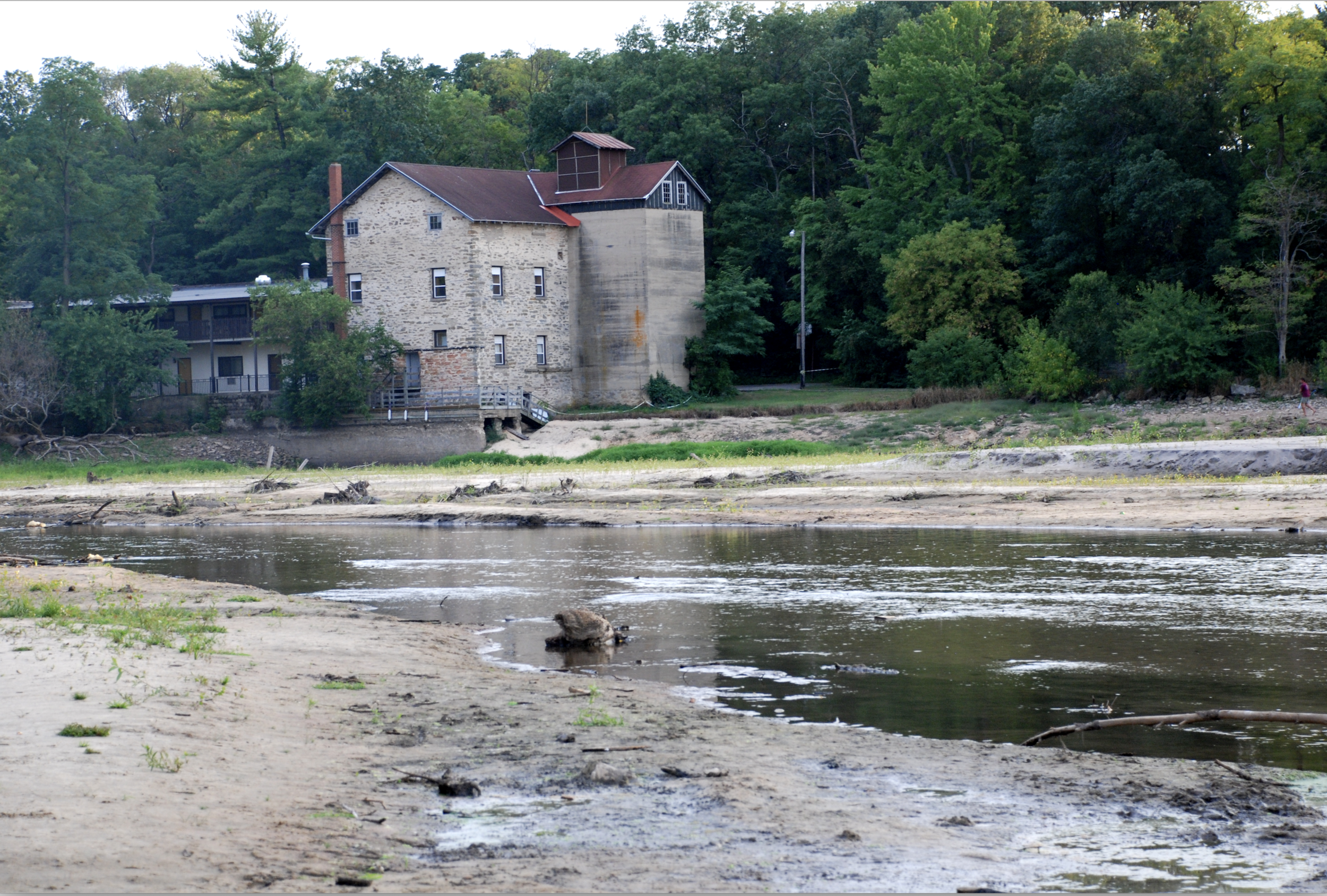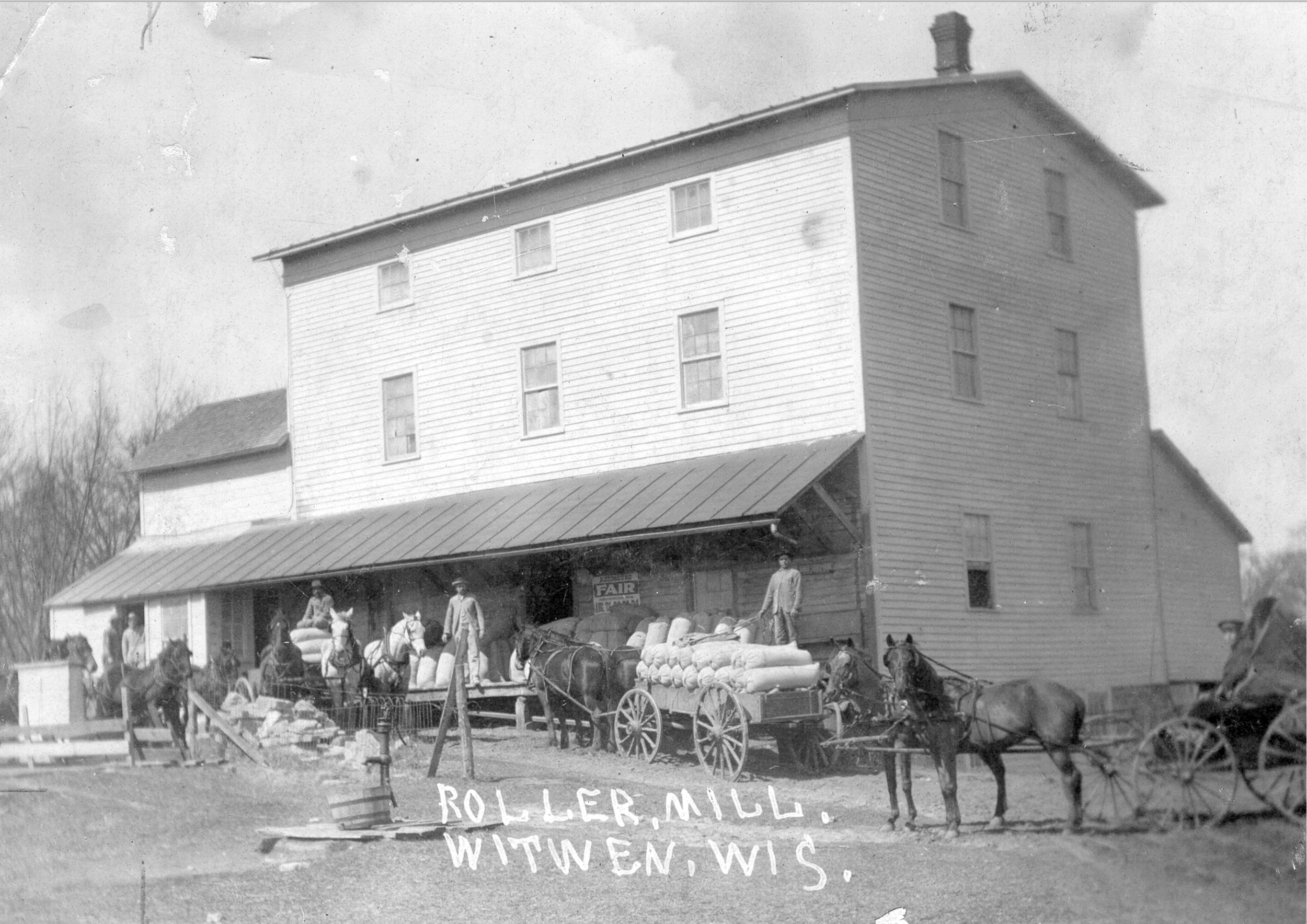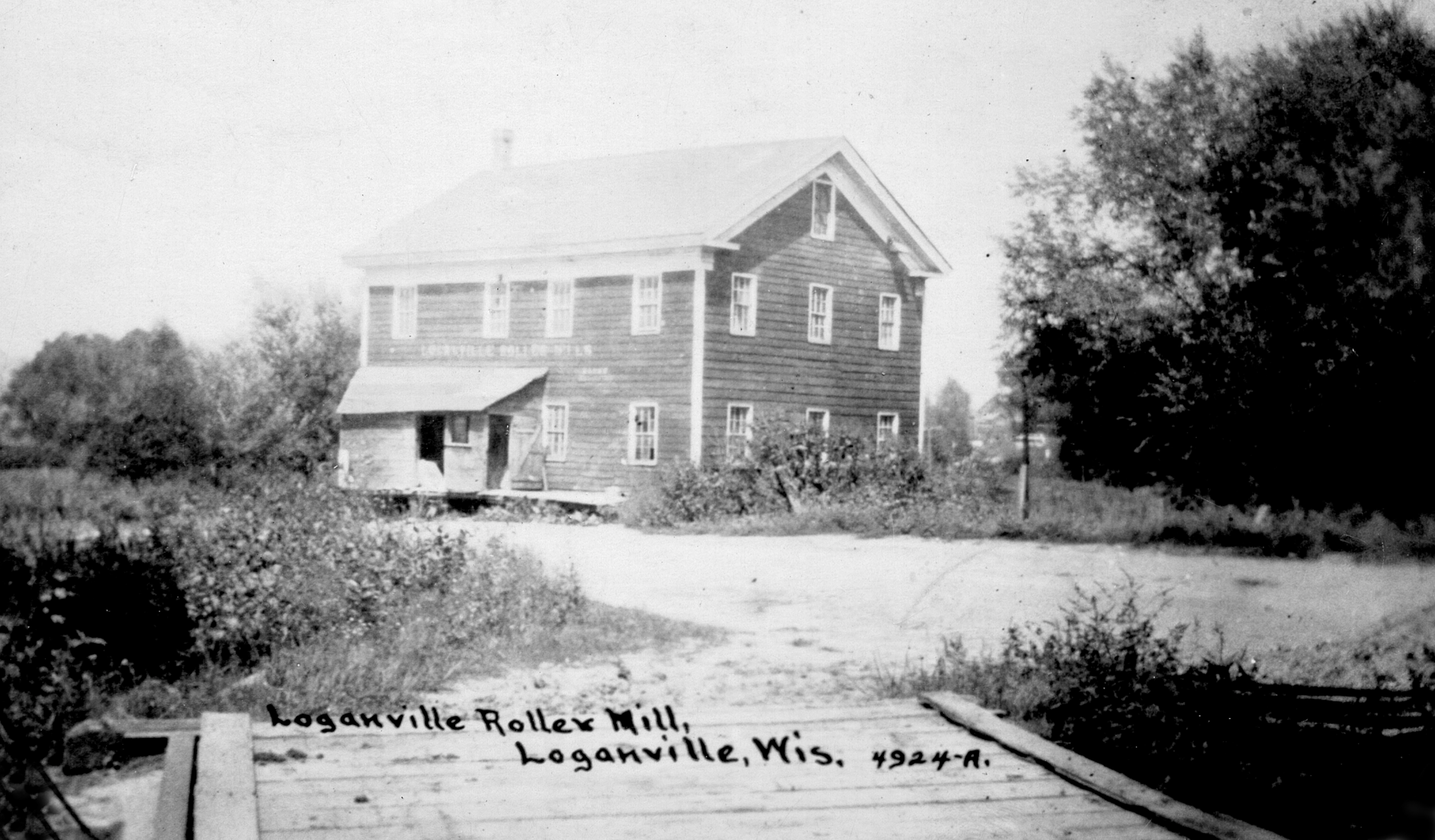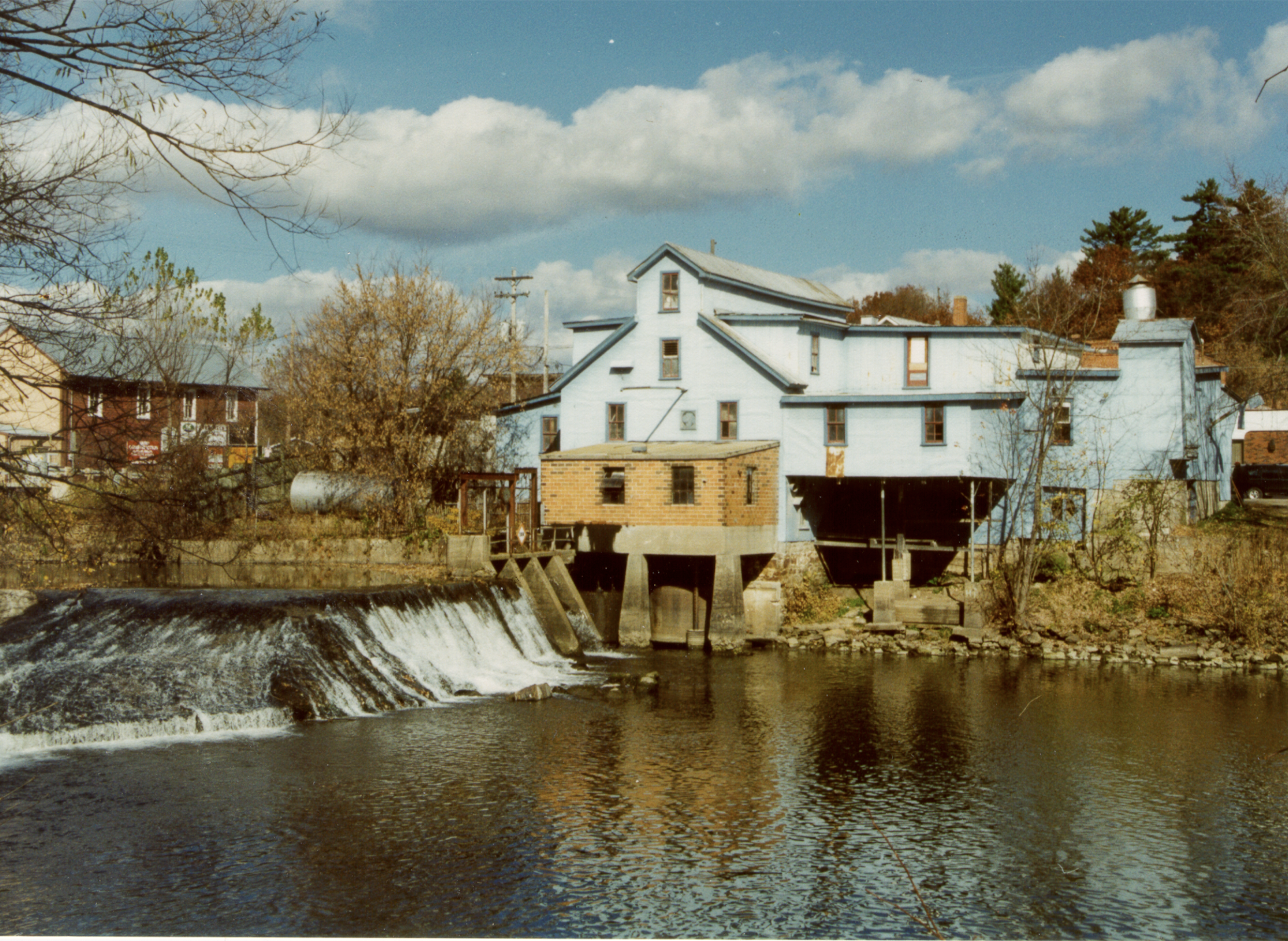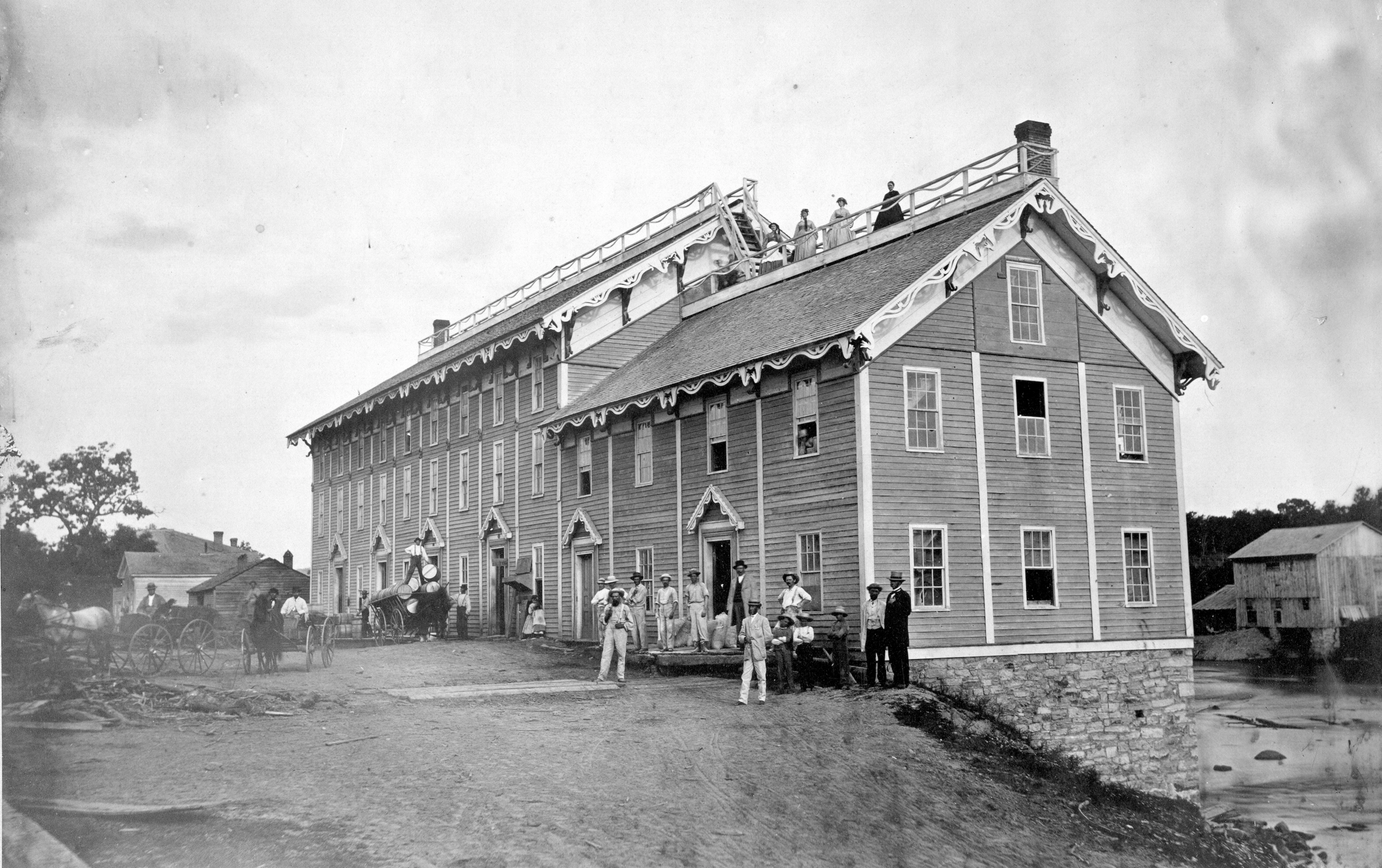Gristmills and
Buckwheat Flour Bag
This pristine paper flour bag was recently given to SCHS by our good friends at the Dells Country Historical Society. The gristmill of Henry Konkel was located in the Town of Greenfield in extreme eastern Sauk County. Located on Rowley Creek the mill was started around 1887 and became a prominent industry in Greenfield.
Konkel also used his waterpower to operate a sawmill and a sorghum mill. Later Konkel added a general store which became quite popular. In 1905 the Konkel mills were destroyed by fire and were subsequently rebuilt. After the death of Henry Konkel Sr. in 1915 his son Henry Konkel Jr. took over the operation and built a new two-story cement store building that year.
The Konkel Mills flour bag most likely dates after WWII when paper flour bags began to be produced and replaced cloth flour sacks.
Fanny Farmer’s 1896 Recipe book
What’s the difference between a gristmill and a flour mill?
Both terms refer to mills that grind grain. The term “grist” actually means grain that is ground to make flour. A gristmill however could grind flour, meal or feed for animals from a variety of grains including corn (yes, corn kernels are considered grain). Historically a grist mill was a local mill where farmers brought their own grain to be ground and paid the miller with a percentage of the final product. This was called the “miller’s toll.” A flour mill was more typically a mill that made flour for wholesale or retail. At one time virtually every community in Sauk County had a gristmill while still more were in rural locations. Some were water powered and others were steam powered.
"Flour was needed, and our neighbors were ready with a supply. It was cheaper than it had been in the east, and the first we got was so much poorer that it never could have become a commercial article. We afterward learned that it had been made from musty wheat. The wheat would not bring a fair price in the market, perhaps could not have been sold at all, so the farmer had it made into flour and disposed of it that way.
"Later, when we had raised grain of our own, we learned lots about grist mills, and the faults and virtues of millers. The average farmer in those days gave the millers about as many compliments as are now bestowed on commission men. Millers took their pay in tolls, or shares from the grain they ground, and were accused of taking excessive tolls.
"Each mill, away off, was supposed to make better flour than other mills, and we sometimes went a long way, hoping for better results. One fault of the system was that a grist of good wheat might pass into the stones, following some one's smutty, or perhaps sprouted, wheat or rye, and thus become contaminated with what had gone before. All grinding in those days was done with the old-fashioned stones. The roller process had not been adopted, and they had scarcely commenced the use of the metal mills for feed grinding. Our nearest grist mill was at Reedsburg, four and a half miles away. The next most convenient one was at Delton, about eight miles. This mill was where the Sarringtons now do business.”
William Toole – Sauk County Pioneer
A Standard History of Sauk County, Wisconsin p. 72
Harry E. Cole, 1918
Was this the Island Woolen Mill? No, there was another woolen mill on the other side of Baraboo, near where the dog park is today. The area was called Manchester. The foot bridge North of the history center is the old Manchester street bridge from that area.





